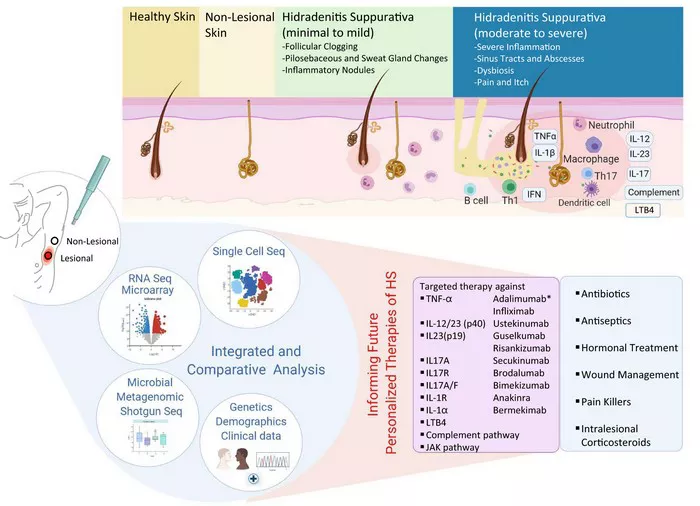Atopic dermatitis, a chronic and inflammatory skin condition, affects millions of individuals worldwide. Characterized by red, itchy, and inflamed skin, this condition not only poses challenges for those afflicted but also prompts the curious question: How does atopic dermatitis spread? Unraveling the intricate web of factors contributing to the spread of atopic dermatitis requires a comprehensive examination of the condition, its triggers, and the underlying genetic and environmental elements.
Defining Atopic Dermatitis
Atopic dermatitis, commonly known as eczema, is a chronic skin disorder characterized by inflammation and itchiness. It predominantly affects children, but it can persist into adulthood or manifest later in life. The exact cause of atopic dermatitis is multifaceted, involving a combination of genetic, immune system, and environmental factors.
The Genetic Factor
Genetic Predisposition: A Familial Link
One of the primary determinants influencing the spread of atopic dermatitis is genetic predisposition. Individuals with a family history of atopic conditions, such as asthma or hay fever, are more likely to develop atopic dermatitis. The genetic component contributes to an increased susceptibility to environmental triggers, making it essential to understand the familial link to effectively manage and prevent the spread of the condition.
Immune System Dysregulation
The Role of Immunoglobulin E (IgE) in Atopic Dermatitis
The immune system plays a pivotal role in atopic dermatitis, and the dysregulation of certain immune responses is a key factor in its development. Immunoglobulin E (IgE) antibodies, responsible for allergic reactions, are often elevated in individuals with atopic dermatitis. Understanding the immune system’s involvement provides insight into how the condition spreads and underscores the importance of immune-modulating therapies in its management.
Environmental Triggers
Allergens and Irritants: Catalysts for Atopic Dermatitis Spread
Beyond genetic and immune system factors, environmental triggers significantly contribute to the spread of atopic dermatitis. Allergens and irritants, such as pollen, pet dander, and certain fabrics, can exacerbate symptoms and initiate flare-ups. Identifying and minimizing exposure to these triggers are essential steps in preventing the spread of atopic dermatitis.
Early Life Influences
The Hygiene Hypothesis: Childhood Experiences and Atopic Dermatitis
Childhood experiences and early-life exposures play a critical role in the development and spread of atopic dermatitis. The hygiene hypothesis suggests that limited exposure to certain microbes during early childhood may contribute to an increased risk of atopic conditions. Understanding the balance between cleanliness and microbial exposure is crucial for preventing the spread of atopic dermatitis, especially in the early stages of life.
Lifestyle Factors
Stress, Diet, and Sleep: Unraveling the Connections
Lifestyle factors, including stress, diet, and sleep, can impact the severity and spread of atopic dermatitis. Chronic stress, poor dietary choices, and inadequate sleep can weaken the immune system and trigger inflammatory responses, exacerbating atopic dermatitis symptoms. Addressing these lifestyle factors is paramount in managing the condition and preventing its spread.
Environmental Influences
Climate and Air Quality: External Forces at Play
Geographical location and climate can also influence the prevalence and spread of atopic dermatitis. Dry and cold climates can lead to increased skin dryness, while high levels of air pollution may exacerbate symptoms. Recognizing the role of environmental influences allows for targeted preventive measures, particularly for those living in regions with specific climate challenges.
Contagion Myth: Dispelling Misconceptions
Atopic Dermatitis as a Non-Contagious Condition
It is crucial to dispel the common misconception that atopic dermatitis is contagious. Unlike some skin conditions caused by infectious agents, atopic dermatitis cannot be spread through direct contact. Understanding the non-contagious nature of atopic dermatitis is vital for dispelling stigma and fostering a supportive environment for individuals affected by the condition.
Conclusion
In conclusion, understanding how atopic dermatitis spreads requires a nuanced exploration of genetic, immune system, environmental, and lifestyle factors. Recognizing the interplay of these elements is essential for developing effective prevention and management strategies. By addressing genetic predisposition, immune system dysregulation, environmental triggers, early-life influences, lifestyle factors, and environmental influences, healthcare professionals can guide individuals towards a more informed and proactive approach to managing atopic dermatitis. As research continues to unveil the complexities of this condition, a holistic understanding will empower both healthcare providers and individuals to navigate the challenges posed by atopic dermatitis and work towards minimizing its impact on global health.
























